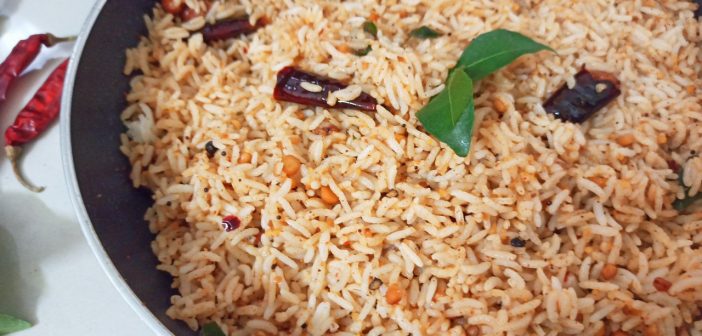Puliyogare, also known as puliyodarai, is a cherished dish from the South Indian culinary tradition that holds a special place in the hearts and homes of Belgaum, Karnataka. This tangy and spicy tamarind rice is not only a staple at festive occasions but also a beloved comfort food across South India. Its unique flavor profile and cultural significance make it a fascinating topic for exploration. This article delves into the origins, variants, and best places to find Puliyogare in Belgaum, along with its essential ingredients and preparation methods.
Origins of Puliyogare
The origins of Puliyogare can be traced back to ancient South Indian cuisine, where tamarind, known for its tangy flavor, has long been a central ingredient. The dish’s roots are deeply embedded in traditional practices, with variations found across different regions of South India. The name “Puliyogare” translates to “tamarind rice” in Kannada, reflecting its primary ingredient.
Historically, Puliyogare is believed to have been a staple for travelers and pilgrims due to its ease of preparation and preservation. It is commonly offered as a prasadam (sacred offering) in temples, which speaks to its spiritual and cultural significance.
Ingredients and Preparation
The fundamental ingredients for Puliyogare include:
- Tamarind: The base ingredient, which imparts the dish’s signature tanginess. Tamarind pulp is often used, which is extracted from soaking tamarind in water and straining it.
- Rice: Typically, medium or long-grain rice is used. The rice is usually cooked and cooled before being mixed with the tamarind paste and spices.
- Spices: The dish features a blend of aromatic spices such as mustard seeds, urad dal (black gram), chana dal (gram), cumin seeds, and fenugreek seeds. These spices are often tempered in oil to enhance their flavors.
- Ground Spices: A key component is the spice mix, which includes dried red chilies, coriander seeds, and black sesame seeds. These are roasted and ground into a coarse powder, adding depth and complexity to the dish.
- Additional Ingredients: Curry leaves, asafoetida (hing), and turmeric powder are also commonly used to flavor the rice. Groundnut (peanuts) and fresh grated coconut can be added for texture and additional flavor.
The preparation involves making a tamarind paste with the pulp and spices, which is then mixed with cooked rice. The rice absorbs the tangy and spicy flavors, creating a harmonious blend of tastes.
Variants of Puliyogare
While the basic concept of Puliyogare remains consistent, regional variants showcase local flavors and ingredients. Some notable variations include:
- Karnataka Style Puliyogare: This version, popular in Belgaum and other parts of Karnataka, is characterized by its use of a slightly sweet and spicy tamarind paste. The Karnataka variant often includes jaggery (unrefined cane sugar) to balance the tanginess of the tamarind.
- Tamil Nadu Style Puliyodarai: In Tamil Nadu, Puliyodarai is known for its robust and fiery flavor. It typically features a spicier tamarind paste and might include additional ingredients like roasted peanuts or sesame seeds.
- Andhra Style Puliyogare: Andhra Pradesh’s variant is known for its intense spiciness and use of additional ingredients like curry leaves and garlic. The Andhra version may also incorporate a bit of tamarind pulp for an extra punch of tanginess.
Best Places to Find Puliyogare in Belgaum
Belgaum is renowned for its rich culinary heritage, and Puliyogare is a staple in many local eateries and homes. Here are some top places in Belgaum where you can savor authentic Puliyogare:
- Kamat’s Hotel: A well-known establishment in Belgaum, Kamat’s Hotel serves traditional South Indian fare, including a flavorful Puliyogare that is praised for its authentic taste and generous use of spices.
- Hotel Asha: Located in the heart of Belgaum, Hotel Asha is a popular spot for traditional Karnataka cuisine. Their Puliyogare is a favorite among locals and visitors alike for its balanced flavors and perfect tanginess.
- Sukh Sagar: Known for its diverse South Indian menu, Sukh Sagar offers a delightful Puliyogare that captures the essence of Karnataka-style tamarind rice. The dish is consistently well-prepared, with just the right blend of spices.
- Local Temples and Prasadam Stalls: Many temples in Belgaum offer Puliyogare as prasadam, which is often prepared with a lot of care and devotion. These offerings provide a unique and authentic taste of this traditional dish.
Cultural Significance and Modern Adaptations
Puliyogare holds a special place in South Indian culture, often being part of festive celebrations, special occasions, and temple offerings. Its enduring popularity is a testament to its deep-rooted cultural significance and its ability to bring people together through food.
In recent years, Puliyogare has also seen modern adaptations. Some chefs and home cooks experiment with variations by incorporating ingredients like mushrooms, bell peppers, or even quinoa, catering to contemporary tastes while honoring traditional flavors.
Conclusion
Puliyogare is more than just a dish; it is a celebration of South Indian culinary traditions and flavors. In Belgaum, this tamarind rice dish embodies a rich heritage and continues to be a favorite among locals and visitors. Whether enjoyed at a local eatery, temple, or prepared at home, Puliyogare offers a delightful blend of tanginess, spice, and cultural significance that truly captures the essence of South Indian cuisine.





